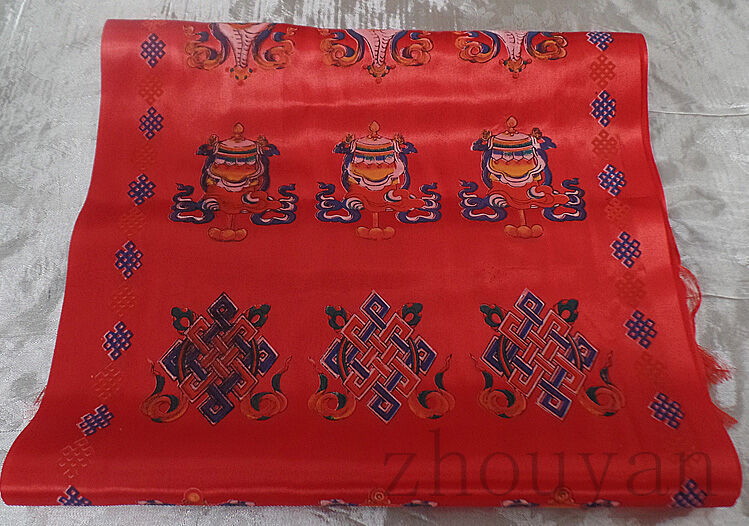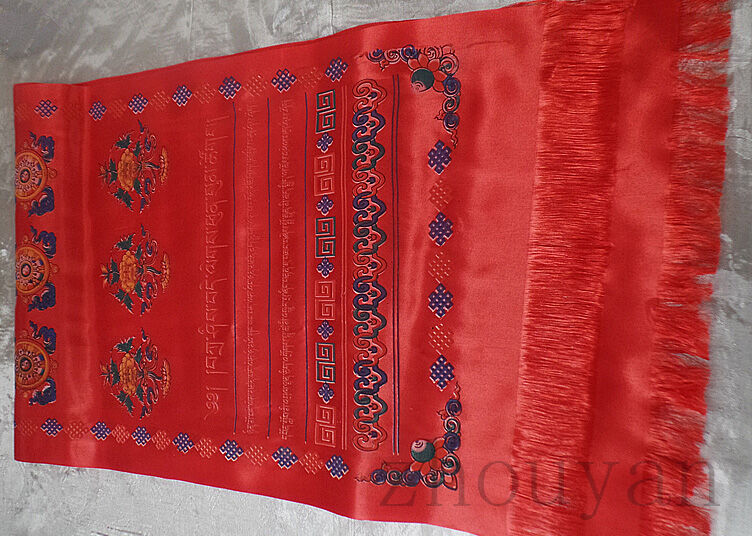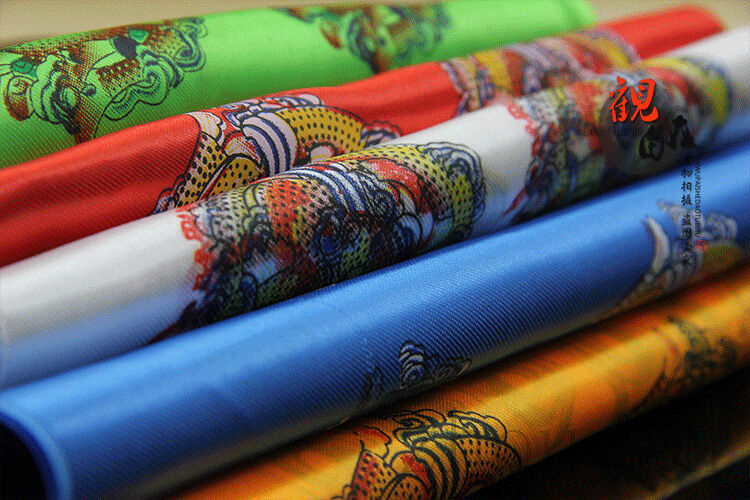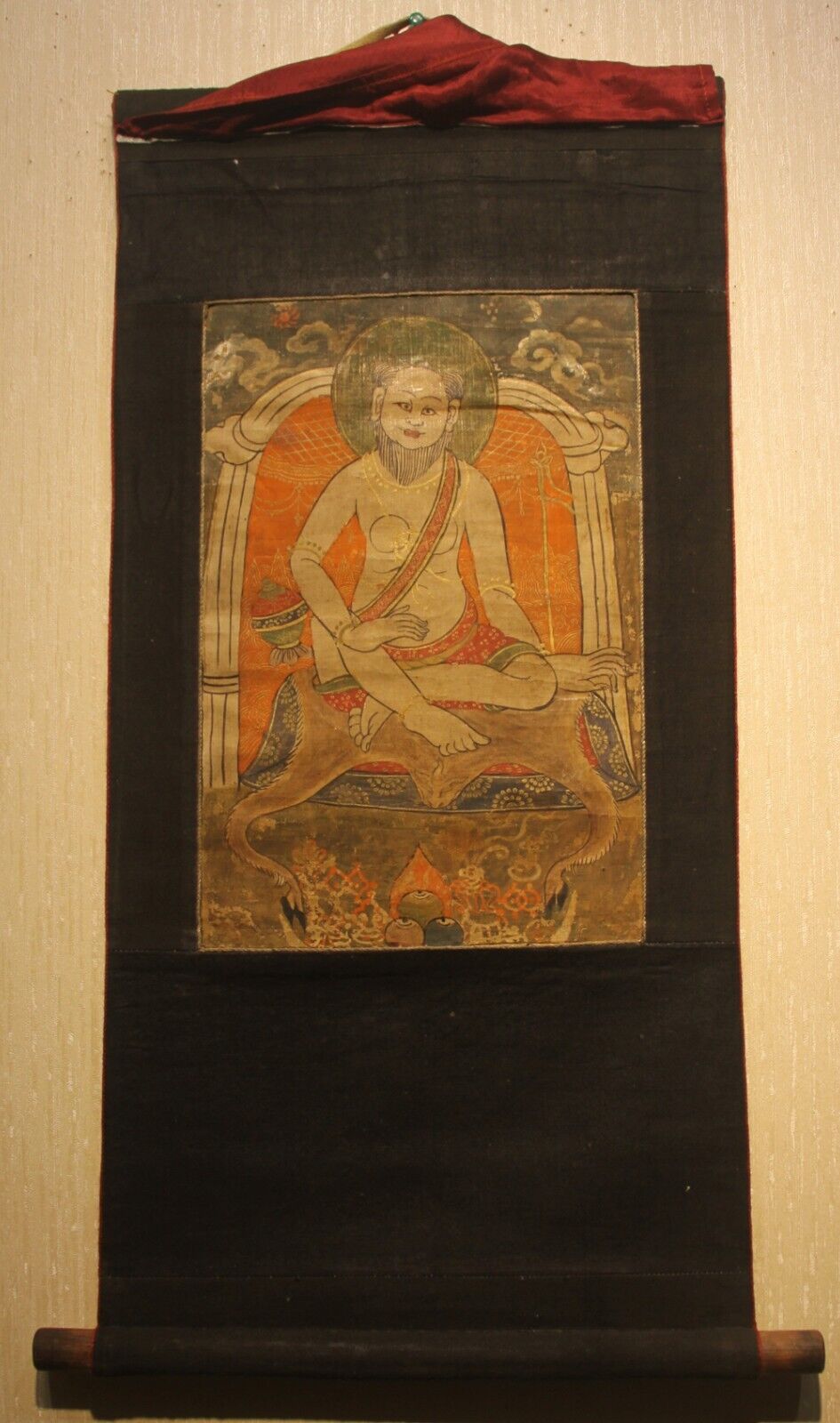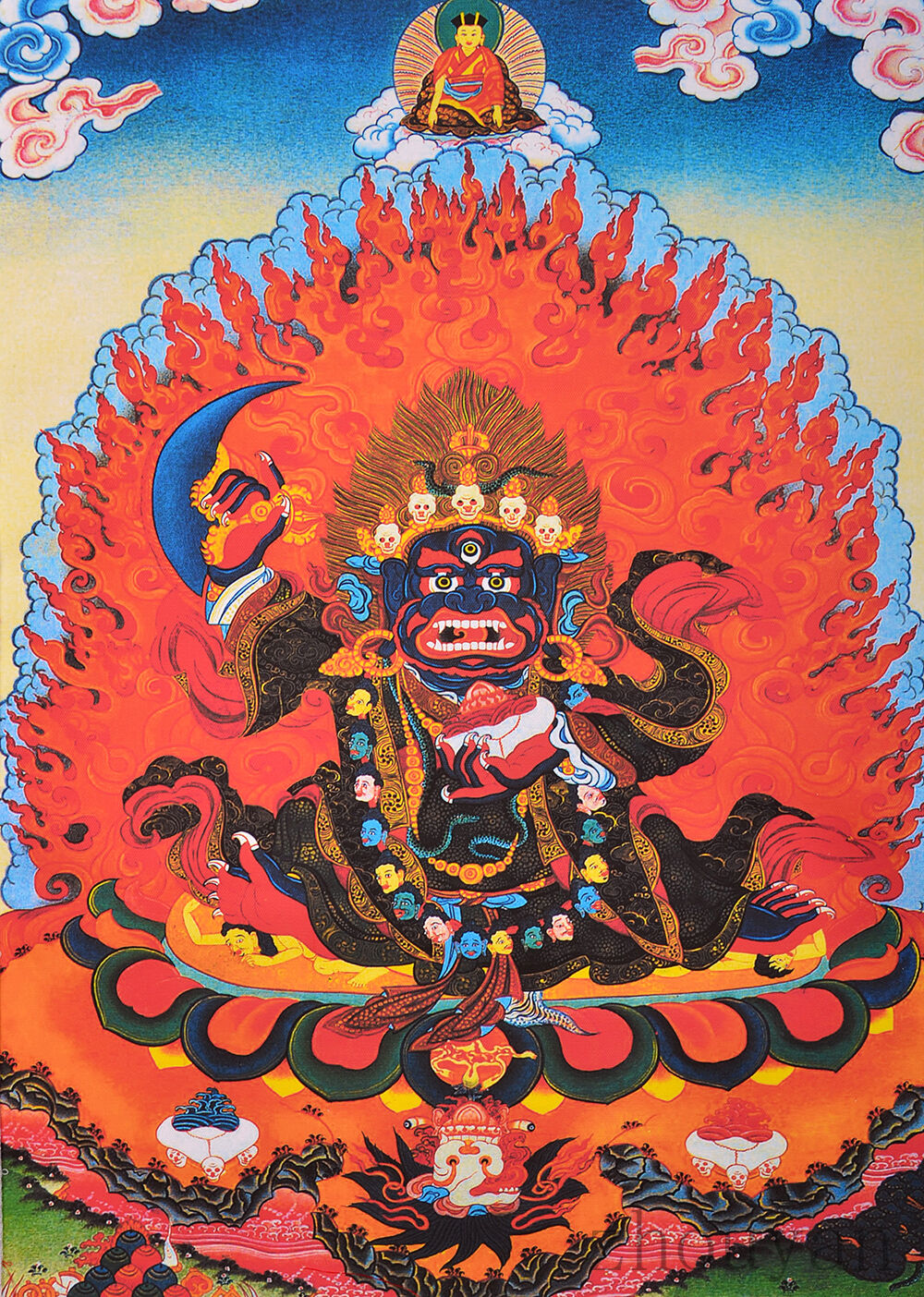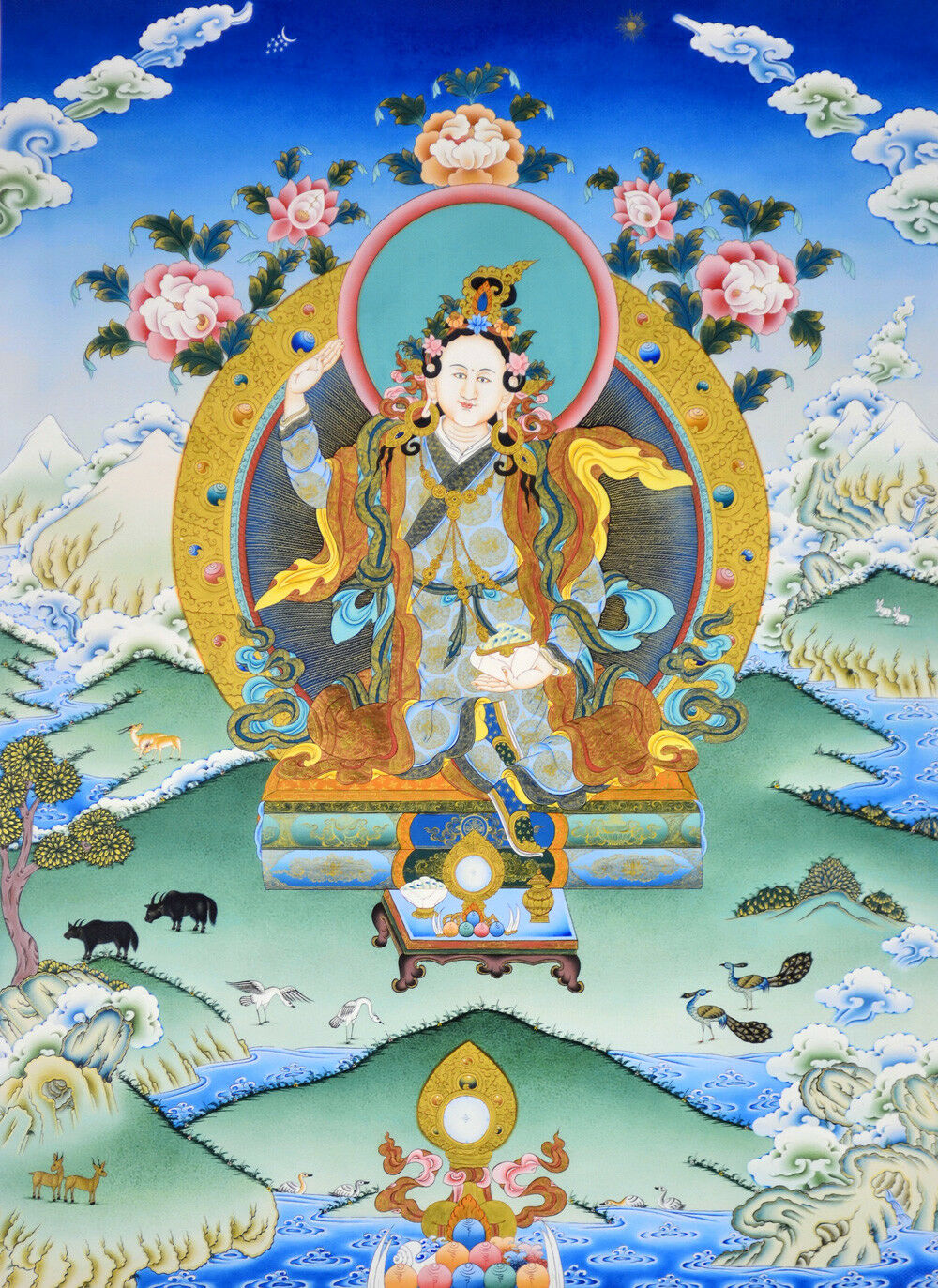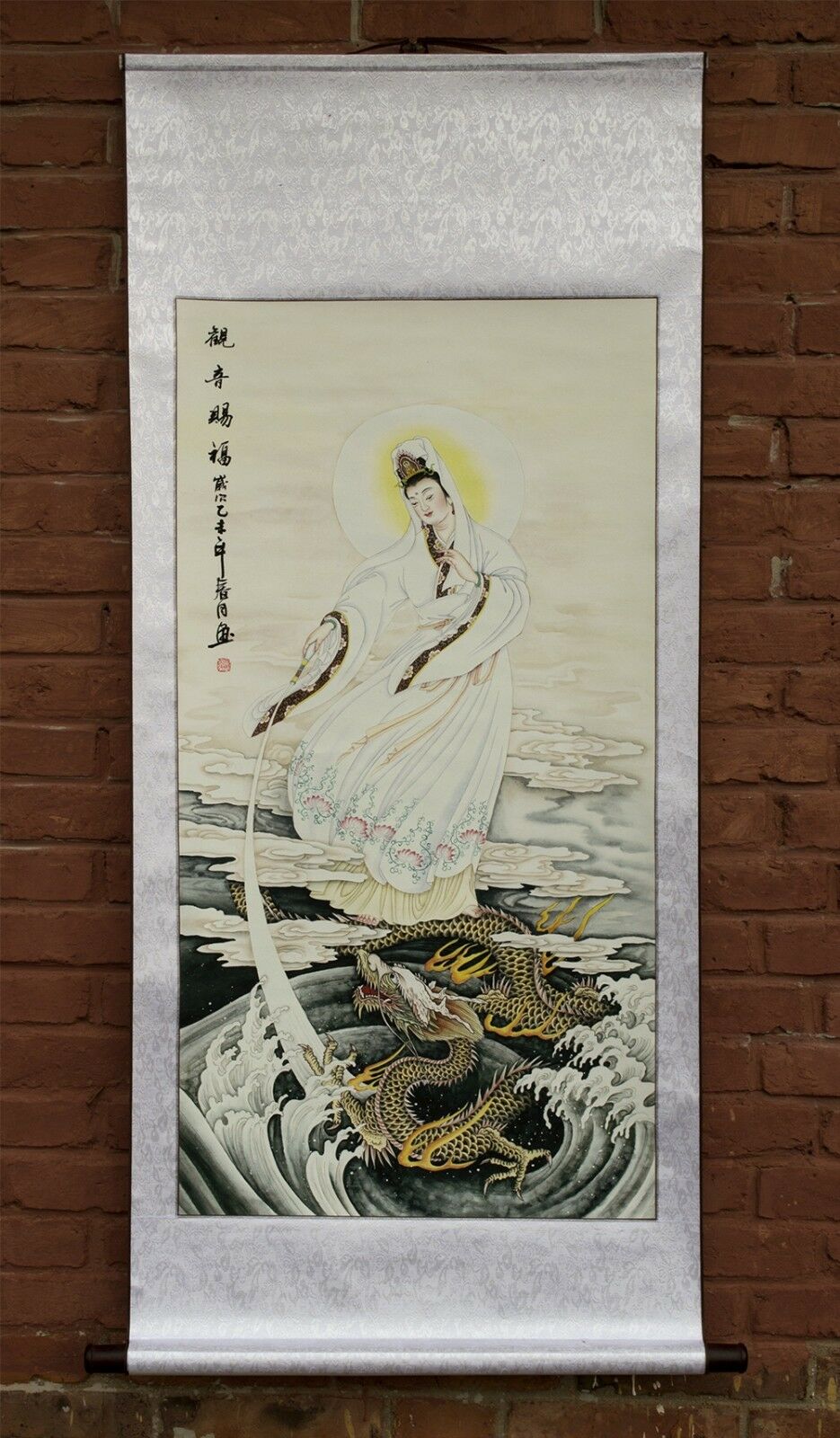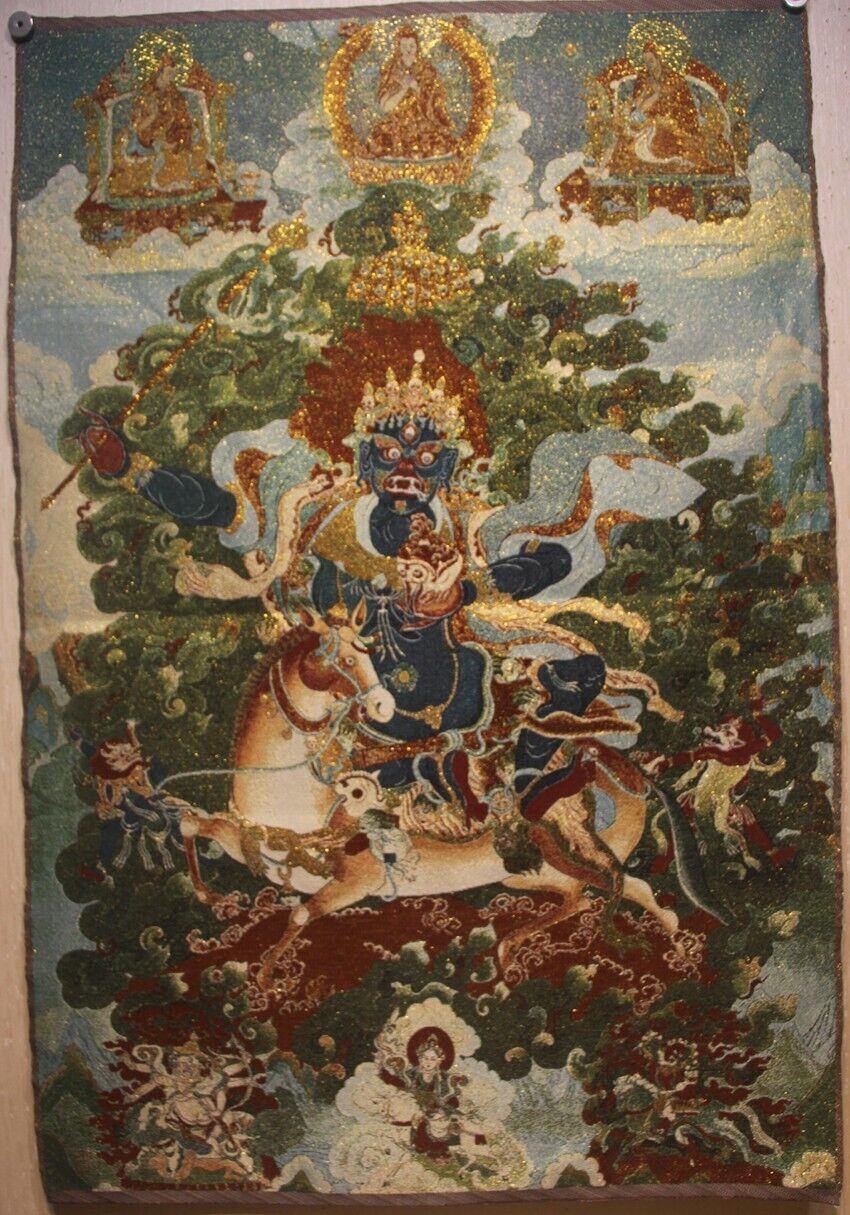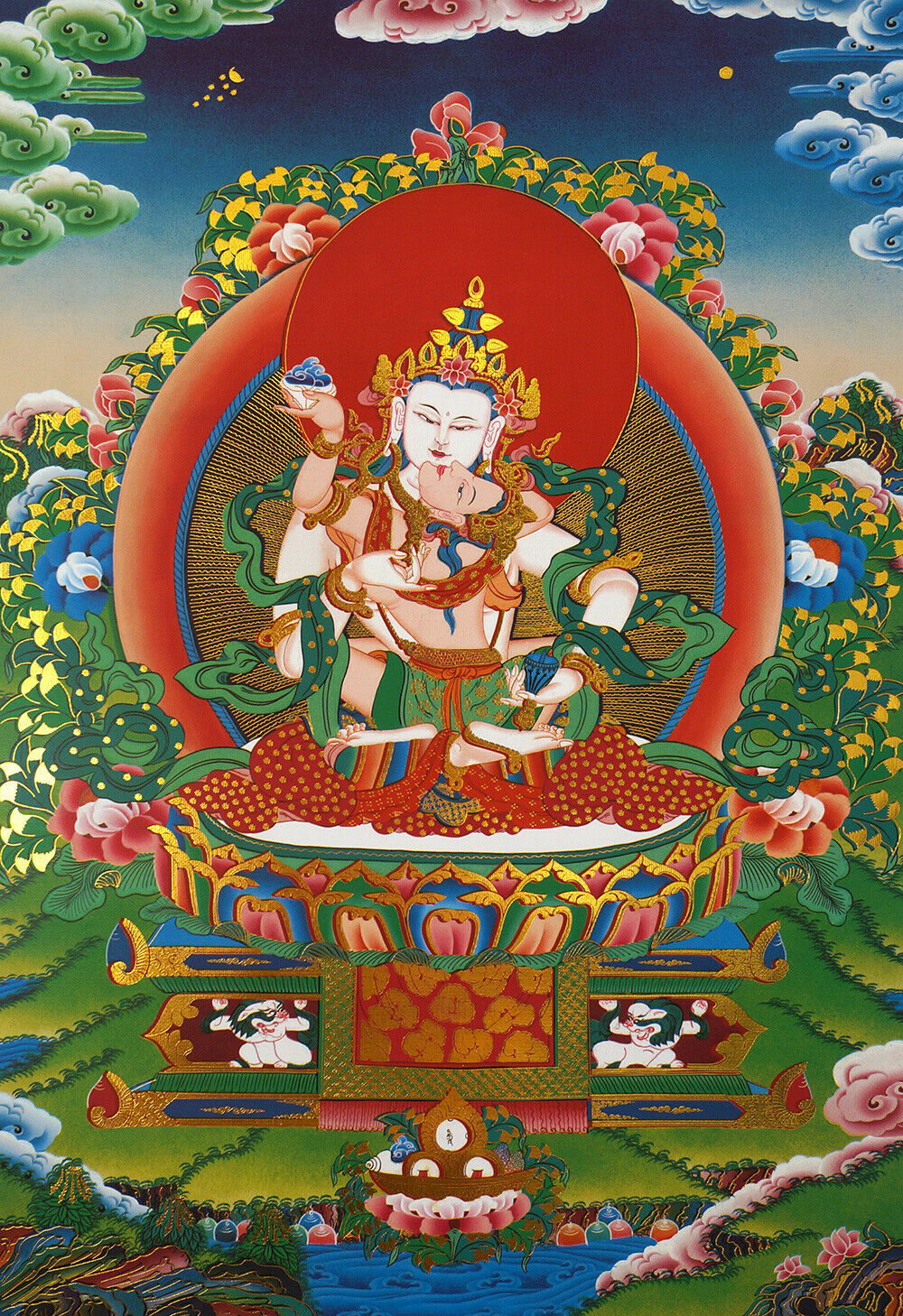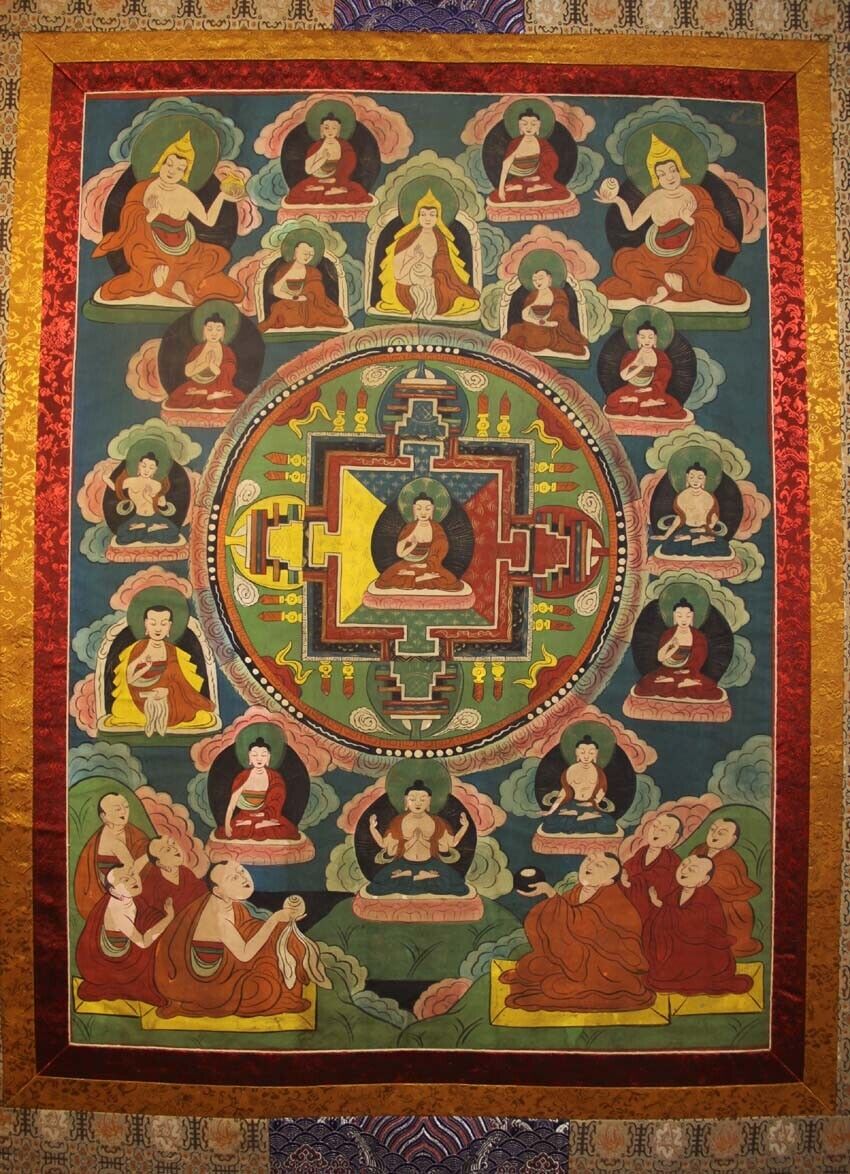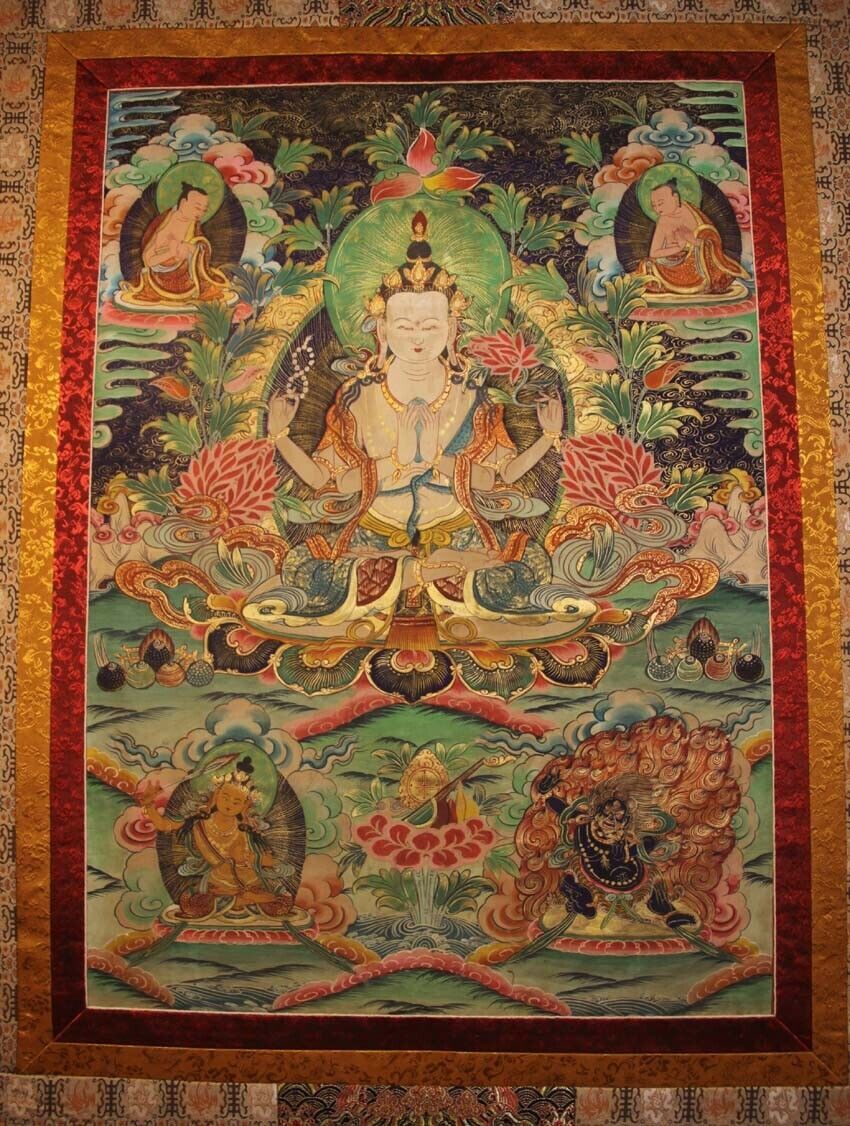-40%
BLESSED 60" LONG! TIBETAN GOOD LUCK HADA KHATA SCARF: 8 BUDDHA TREASURES
$ 3.66
- Description
- Size Guide
Description
ebay auctionMy Auctions
Newly Listed
Current Auctions
Ending Soon
Chinese Painting
Oriental Fabric
Buddhism Amulet
Tibetan Thangka
Buddhism Items
Asian Collectbies
60" LONG! TIBETAN GOOD LUCK RED HADA KHATA SCARF: EIGHT TREASURES OF BUDDHA
Size(cm):
160cm*36cm
Size(inch):
63 inches
Material:
polysatin silk, Hand made, emboridery as eight auspicious signs and blessing sutra, top choice for people who seek blessing as it was BLESSED IN HUAZANG MONASTERY
Description:
Khata is an informal term and Jael-dhar is the formal term, for traditional Tibetan offering scarf. Khatas are made of cotton, silk or other materials. They look more like a long scarf and have auspicious symbols or mantras inscribed or woven into the fabric. It represents the sincerety of ones offering, with no negative thoughts or motives in mind.They come predominantly in shades of white or ivory, due to the purity of the color but you will also find them in Blue,Red,Green and Yellow/Gold Yellow. It is a part of Tibetan way of life from birth to death and between. It is also used as a sign of recognition of ones love or respect for another. The offering of Khata is probably one of the most well known customs of Tibetan culture. Something that one could call a Tibetan bouquet, that is very reusable and one specific Khata may travel the world over.
Historically, Khatas have been in use in the Tibetan culture for many centuries, there are 3 schools of thoughts, due to the neglect in small day to day customs being put in writing, these have been mostly transferred by word of mouth, through the generations. One school believes that it started in the 7th Century AD during the rule of King SongTsen Gompo. He would present any minister or citizen who did a good job with a skin of a prized animal, like tigers, leopards, foxes or others. With the advent of Buddhism in Tibet in the 8th century as a State religion, the then King Trisong DeuTsen, Guru Rinpoche (Acharya Padmasambhava), Abbot Shantarakshita and others leaders, discouraged the giving of animal skin, as it required the killing of an animal for the fur or skin. Aware of the Indian tradition of giving offerings of sets of new clothing to the teachers or Guru, the tradition of giving the skin of prized animals was soon replaced with expensive brocades from China. Then to present day Khatas with the passage of time. The second school of thoughts say that it was prevalent in the nomadic communities of Tibet before the advent of Buddhism, even upto the Chinese invasion in 1950s in some remote parts of Utsang and some regions close by, and may still be used, traditionally people would put Tsampa on the shoulders of people that came to their homes for work or visit to signify the purity of their wishes of respect, welcome or fare well.This ceremony was called Kartak. It was put on the right shoulder on men and left on women. It was decoratively displayed with symbols and greetings on floors to welcome high lama or officials, which is still done to this day. Tsampa, a roasted barley or any roasted grain flour was/is the staple diet in Tibet.The ceremony was done on all aspects of day to day life and with time the need for putting it around vases full of water offerings moved it to white wollen threads and eventually to present day Khatas.The other school belief is it originated in India or China, but these are just biased thoughts from our view as they seem not to be used in these both communities currently. Then with the passage of time, the expensive brocades were replaced with scarves made of cotton and silk. These days you will see all the five colors of the elements of the earth, Blue, White, Red, Green and Yellow. Mostly in shades of white or ivory is what you will find commonly used. Khatas come in a wide selection of different lengths, fabrics and quality.
The offering of a scarf may seem to be a simple gesture but in Tibetan tradition it has its own significance and protocol and is governed by tradition. To present a Khata you first fold it in half length-wise, this represents the interdepencence of each other. Then when you offer the scarf to the person, you offer the open edges facing the person you are giving it to, the folded section will be towards you, which represents your open pure heart, with no negative thoughts or motives in the offering.
Offering of Khatas would fall under 2 groups very broadly, with greetings and well wishes being the common in both offerings.
HOW TO OFFER A KHATA:
RESPECT/GRATITUDE: For holy sites, honored monks, teachers, diginitaries and elders, the scarf is given with folded hands near your forehead, with a humble bow before them, with head bent over and palms joined in respect. You never put the Khata over their neck in this situation.In most cases the giver will receive his/her Khata back from the given, as a token of blessing back to them, specially when you visit high lamas and teachers. It is custom to put Khatas over statues, thangka painting, pictures of reincarnated rinpoches and altar spaces.A Khata offered to H. H. the Dalai Lama and received back by a Tibetan personally will be cherished and preciously kept as it is now a very special blessing ,talisman and protector. It may never come back into recirculation from that Tibetan again. It is also flown and put on Prayer Flags before one hangs them as a sign of your prayers being sincere and pure, also as an offering to the Gods for swift accomplishment of prayers and wishes.
AFFECTION/CELEBRATION: This is for special events, like marriage, birthdays, newyear,farewell & safe journey, welcome home, honor celebration of events and happenings, death ceremony and other day to day events in lifes journey.In the event of these occasions you can offer scarfs around the neck of recepients provided they are not from the first category, or lay it over the body in case of a deceased.
Eight Treasures
Parasol
First and foremost the parasol offers protection from rain and sun. Out of this grew its function as status symbol: important personages, deities, and the Buddha have the right to a parasol. In a religious sense, a parasol offers protection from unfavorable influences and symbolizes spiritual power.
Fish
Originally, fish were a symbol of the Ganges and Yamuna Rivers in Northern India. Later, they represented water in general, and by association, fertility, prosperity, and happiness.
Treasure Pot
A pot contains water or food. It conveys the idea of gratifying physical needs. Out of this grew the ideal of a pot that is never empty, or a symbol of wish fulfillment (spiritual and material).
Lotus
A lotus is born in the mud, finds it's way upward, and opens just above the surface of the water in all spotlessness. It is a symbol of immaculacy, of the spirit that is. (the lotus doesn't grow in Tibet, so it is often highly stylized in thangkas.)
Conch shell
The white, right-turning (left is more common in nature, but right is more positive than left) whelk is associated with water, and is used on altars for, among other things, incense offerings. Priests also blow on conchs, therefore it is a symbol of the Buddha's fame because the sound of the trumpet goes in all directions.
Wheel
The chakra was once a disk-shaped weapon and sun symbol. The spokes of the wheel symbolize the eight compass points. It is the signature symbol of Buddhism. In Sarnath, the Buddha set the wheel in motion; his teachings began to gain momentum.
Shrivatsa or the Endless Knot
This is the perpetual knot, with neither beginning nor end; everything is interconnected. It is a symbol of the infinity of Buddhism.
Banner
As a sign of victory, this is the symbol of compassionate Buddhist knowledge winning out over ignorance.
HOW TO OFFER A KHATA
KHATA COLOR MEANINGS
Color
Directional
Elements
Symbolic
blue
center
sky
wisdom
white
east
water
peace
red
west
fire
power
green
north
wind
confidence
yellow
south
earth
happiness
Gallery
Combined purchase from zhouyan? Not only
Save Money
, But also
Save Time
!
Over
3
thangkas will
Free Update to Quickest Fedex/Ems
; Over
5
thangkas will be
Free shipping
!
Click following thumbnails to See more thangka in my eBay store!
Buddha
Medicine Buddha
Shakyamuni
Amitabha
Amitayus
Vairocana
Samantabhadra
Aksobhya
Amoghasiddhi
Ratnasambhava
Other Buddhas
Vajra
vajrasattva
Yamantaka
Vajrakila
Kalachakra
Vajrahara
Guhyasamaja
Hayagriva
Hevajra
Vajrapani
Other Vajras
Bodhisattva
Avalokitesvara
Manjushri
Cundi
ksitigarbha
Maitreya
Samantabhadra
Marichi
Mahasthamaprapta
Guardian
Yamantaka
Vajrakila
Mahakala
Citipati
Palden Lhamo
Rahula
Begtse
Other Guardians
Tara & Dakini
Green Tara
White Tara
Dakini
Vajrayogini
White Umbrella
Kurukulle
Ekajati
Other Female Devas
Guru & Wealth
Padmasambhava
Tsong Khapa
Vaishravana
Five Jambhalas
Yellow Jambhala
Green Jambhala
Red Jambhala
White Jambhala
Black Jambhala
Ganesha
Others
Mandala
Refuge Field
Bardo
Feng Shui
Garuda
With Consort
Payment Methods
Paypal:
accept major credit cards, Make payment in seconds!
Refund:
We 100% guarantee for every item that we sell. If you are not satisfied with the item that you purchased for any reason, you may return it within 10 days for a full refund less shipping charges and transaction fees.
BUY MORE TO SAVE POSTAGE!
Combined shipping rate:
1.5
usd per additional amulet or jewelry
5
usd per additional Painting or drawing
Save
30%-60%
per additional carvings or other items
An Amulet are FREE SHIPPING if you won a carving, statue or painting
FREE SHIPPING POLICY FOR WHOLESALE or FINE ART RESELLERS:
If you won more than
9 pieces
of oil paintings, drawings, Pastels or watercolor within one week. Or Purchase more than
500usd
on oil paintings, drawing, Pastels or watercolor within one week. We will offer FREE EMS/USPS SHIPPING to you.
Click following thumbnails to See more items in my eBay store
Why Buy From Zhouyan?
Authentic:
Thousand repeated buyers can not be wrong! We are one of the earliest ebay sellers on Oriental & Art items since 1999, Welcome to Check my feedbacks before you decide to bid. A CERTIFICATE OF AUTHENTICITY IS PRESENT AND WILL BE PROVIDED TO THE BUYER
High Quality & No Reserve Price:
Every Sunday we listed some 0.95usd items at no reserve. We are 100% confident on the quality of what we sell on ebay, we offer the longest (30 Days) Unsatisfied item Return Policy to every buyers.
Perfect Shipping:
Most careful Package, Cheap Shipping fee, Quick Delivery, Nobody has ever left a neg. feedback on bad shipping.
Support our artists and students:
God helps those who help themselves. We sell for Hua Cui artist community and Hua Cui Art school. To keep our artists and students away from starving and shortage on painting materials and keep us concentrate on art studying. No matter you won our item or not, Your every bid is just providing a lunch or a 24x20" canvas for our student.
Click here to Add zhouyan as your favorite seller.
